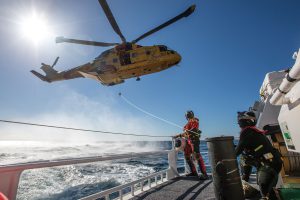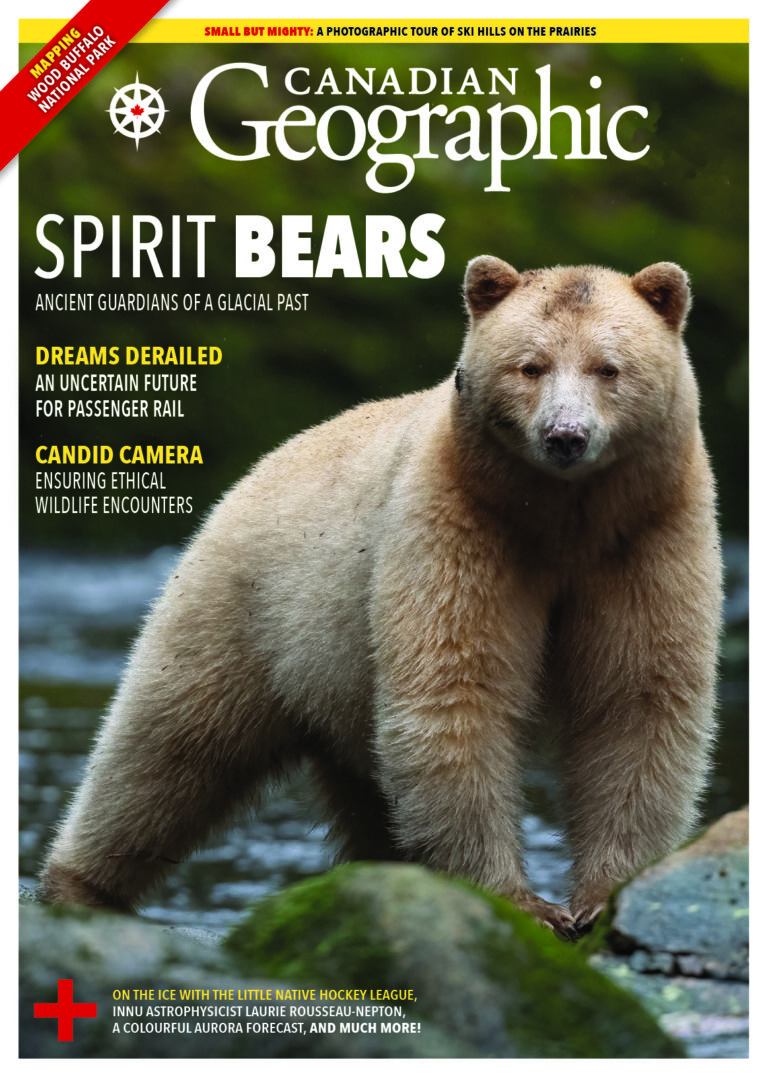
People & Culture
Safety first, service always: The Canadian Coast Guard turns 60
A celebration of the Canadian Coast Guard’s renowned search-and-rescue capabilities — and more — as the special operating agency turns 60
- 4392 words
- 18 minutes
History
After five decades, the Little Native Hockey League tournament continues to thrive as the largest Indigenous youth tournament in Ontario

More than half a century has passed, but Terry Abotossaway still has vivid memories of his pre-teen hockey years. And not all of those recollections are positive ones. Abotossaway, of Aundeck Omni Kaning First Nation on Manitoulin Island, Ont., recalls some of the challenges that Indigenous youth from his community faced just to have an opportunity to play hockey.

Since many adults had other priorities and, in some cases, no way to get their children to games, Abotossaway and his friends often found themselves hitchhiking half a dozen kilometres to nearby Little Current, the island’s largest town. “We would get all of our equipment on, except for our skates,” Abotossaway says, “and we wouldn’t take our sticks with us. Nobody wanted to pick up somebody with a stick in their hands. When we would get to the arena, we would ask to borrow a teammate’s stick so we could play. Sometimes we got picked up when we were hitchhiking and went to the games. And sometimes we didn’t.”
On those fortunate days that a ride was offered into town, Abotossaway and his Indigenous friends often encountered another issue. Racism. Indigenous players were not always welcome on hockey teams. Regardless of their abilities, non-Indigenous players would frequently see the bulk of on-ice action.
That’s why Abotossaway was thrilled in 1971 when a group of men, including his uncle, the late Earl Abotossaway, got together to organize a youth tournament — and restricted it to Indigenous players from Ontario. That event, first held in Little Current, attracted 17 participating squads. They called it the Little Native Hockey League.


“We were totally excited,” says Abotossaway, who played in the inaugural tournament and in several afterwards. “We knew we had something that was just for us.”
The tournament — still going strong and affectionately known as the Little NHL — celebrates its 50th anniversary in March (for the record, tourney organizers are not including 2020 through 2022, when the event was cancelled due to the COVID-19 pandemic, in their anniversary count). Prior to the pandemic, the Little NHL hosted more than 200 participating squads each year, including coed and girls’ teams. It’s the largest Indigenous youth tournament in the province, with several divisions and players ranging in age from five through 17.

Former Anishinabek Nation Grand Council Chief Patrick Madahbee marvels at the tournament’s longevity. “It’s an outstanding accomplishment,” says Madahbee, who has been involved with the event since its inception, including stints on the tournament executive, some years as president. “You have to keep in mind we’re just a group of volunteers. It takes us a year to get organized for the next tournament.”
Madahbee had hoped to play in the tournament’s inaugural year. But he was a few months too old to take part. A couple of his friends were in the same predicament. Instead, the older teens were recruited as referees. “For our ‘pay,’ at the end of the day, we would get a hot dog and a hot chocolate,” Madahbee reminisces.
The event has reached the point where three generations of families have now competed in the Little NHL. This includes former Moose Cree First Nation Chief Mervin Cheechoo, his son Jonathan, who went on to play 560 games in the National Hockey League, and Jonathan’s young son, Jack, who travelled from San Jose, Calif., to take part. Ted Nolan, a member of Garden River First Nation in northern Ontario, is also a tournament alumnus. He went on to both play and coach in the NHL. Nolan’s sons — Jordan, a three-time Stanley Cup champion, and Brandon, who also played in the NHL — are Little NHL graduates as well.
Little NHL president Marian Jacko also marvels at the history of the tournament and the fact it continues to thrive. “Out of adversity, out of something negative, this positive event came to be,” she says. “There’s a real sense of pride for your First Nation when you’re playing in this tournament or even just attending it. It speaks volumes for that vision those founding fathers had.”
Are you passionate about Canadian geography?
You can support Canadian Geographic in 3 ways:

This story is from the January/February 2024 Issue

People & Culture
A celebration of the Canadian Coast Guard’s renowned search-and-rescue capabilities — and more — as the special operating agency turns 60

Exploration
A century after a Canadian was instrumental in charting the world's highest peak, a fellow Canadian reflects on the magnetism of Everest

History
A look back at the early years of the 350-year-old institution that once claimed a vast portion of the globe

History
Michael Adams, president of the Environics group of companies and the Environics Institute, and a regular contributor of published commentary on Canadian values and social trends, says most Canadians view multiculturalism as an important symbol of what we aspire to as a society